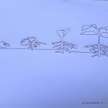Cosmology: A Big Bang and the Beginning of the Universe
Star and Galaxy Formation in the Early Universe
While ancient civilizations had mythological explanations, modern science has uncovered empirical evidence that the universe began around 13.8 billion years ago in a singular event often referred to as the Big Bang.
The specifics of this model describe an initial, imperceptibly small point from which the entire universe emerged. This likely occurred through a quantum fluctuation, with the net energy being close to zero. Over the first fractions of a second, the four fundamental forces - electromagnetism, the weak nuclear force, the strong nuclear force, and gravity - gradually separated and stabilized.
In the earliest stages, temperatures were impossibly high, but as the universe expanded and cooled, different particles and forces were able to form. This included the decoupling of the strong and electroweak forces, the emergence of the Higgs field which gave particles mass, and the fusion of quarks into hadrons like protons and neutrons.
After about a second, leptons and their antiparticles dominated, with a slight excess of matter over antimatter remaining. Over the next 17 minutes, the universe cooled enough for nuclear fusion, creating the primordial hydrogen and helium that would seed the formation of the first stars and galaxies.
As the universe continued expanding and cooling over hundreds of thousands of years, the photons decoupled from matter, marking the transition to the "dark ages" before the first stars ignited. This set the stage for the gradual formation of the large-scale structures we observe in the universe today.
The key points are the initial quantum origin, the progressive separation of forces and particles, the early nucleosynthesis, and the transition to the first visible structures in the universe - all unfolding over the course of the first several hundred thousand years after the Big Bang.
Let's explore the formation of stars. We began our journey by examining the early universe, tracing the evolution from the Big Bang to the emergence of matter, atoms, and molecular hydrogen. Now, we delve into the realm of astrophysics to understand what happened to these particles next.
According to Einstein's general theory of relativity, objects with mass warp spacetime, creating a gravitational pull that attracts all massive objects to each other. Even the tiny atoms present in the universe at this time exerted gravity, along with the abundant dark matter, leading to the gradual accumulation of hydrogen and helium into regions of higher density.
In these dense gas clouds, known as nebulae, a delicate balance exists between the outward gas pressure and the inward gravitational force. If a cloud is massive enough, surpassing a critical threshold called the Jeans mass, gravity will dominate, causing the cloud to collapse. This collapse is accompanied by an increase in temperature, until the inner region reaches a state of temporary hydrostatic equilibrium, forming a protostar.
As more material from the surrounding gas continues to accrete onto the protostar, the gravitational potential energy increases. Eventually, the inward pressure becomes so great that it triggers nuclear fusion, and a star is born – a gigantic spherical furnace of plasma, a hot soup of nucleons and electrons. This star formation process also leads to the reionization of the surrounding nebula, as the intense radiation from the new star strips the gas particles of their electrons.
The precise nature of each star depends on its mass, and we will explore the diverse stellar populations in the future. For now, imagine that during this period, stars are forming all across the universe, gradually lighting up the once pitch-black cosmos and bringing an end to the "dark ages."
The formation of stars is also closely linked to the emergence of the first galaxies, which range from dwarf galaxies with around 100 million to a couple billion stars, to much larger ones with hundreds of billions of stars. Gravity continues to shape the universe, as these massive galaxies, along with the dark matter they contain, gather to form groups, clusters, and superclusters.
By the end of this roughly one-billion-year period of star and galaxy formation, the universe has taken on a form that is much more familiar to us today, although our solar system and planets have not yet formed. To understand the origin of these non-stellar objects, we must first delve deeper into the nature of stars themselves.
About the Creator
Enjoyed the story? Support the Creator.
Subscribe for free to receive all their stories in your feed. You could also pledge your support or give them a one-off tip, letting them know you appreciate their work.






Comments
There are no comments for this story
Be the first to respond and start the conversation.